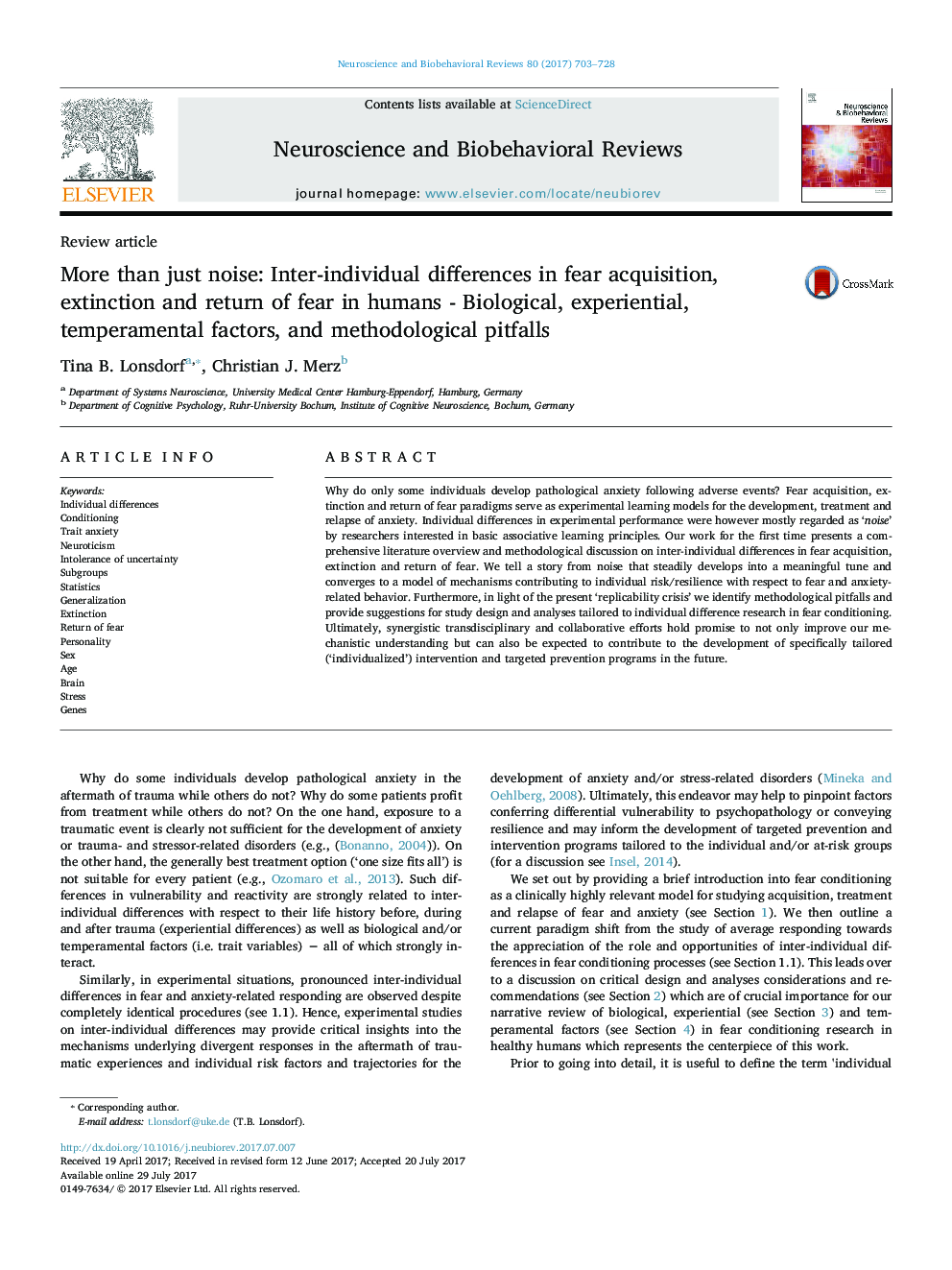| Article ID | Journal | Published Year | Pages | File Type |
|---|---|---|---|---|
| 5043473 | Neuroscience & Biobehavioral Reviews | 2017 | 26 Pages |
â¢Inter-individual differences in fear conditioning were mostly regarded as 'noise'.â¢However, inter-individual differences carry meaningful information.â¢We provide a broad overview on inter-individual differences in fear conditioning.â¢Relevant biological, experiential and temperamental factors will be discussed.â¢Accompanying methodological pitfalls for study design and analyses will be given.
Why do only some individuals develop pathological anxiety following adverse events? Fear acquisition, extinction and return of fear paradigms serve as experimental learning models for the development, treatment and relapse of anxiety. Individual differences in experimental performance were however mostly regarded as 'noise' by researchers interested in basic associative learning principles. Our work for the first time presents a comprehensive literature overview and methodological discussion on inter-individual differences in fear acquisition, extinction and return of fear. We tell a story from noise that steadily develops into a meaningful tune and converges to a model of mechanisms contributing to individual risk/resilience with respect to fear and anxiety-related behavior. Furthermore, in light of the present 'replicability crisis' we identify methodological pitfalls and provide suggestions for study design and analyses tailored to individual difference research in fear conditioning. Ultimately, synergistic transdisciplinary and collaborative efforts hold promise to not only improve our mechanistic understanding but can also be expected to contribute to the development of specifically tailored ('individualized') intervention and targeted prevention programs in the future.
